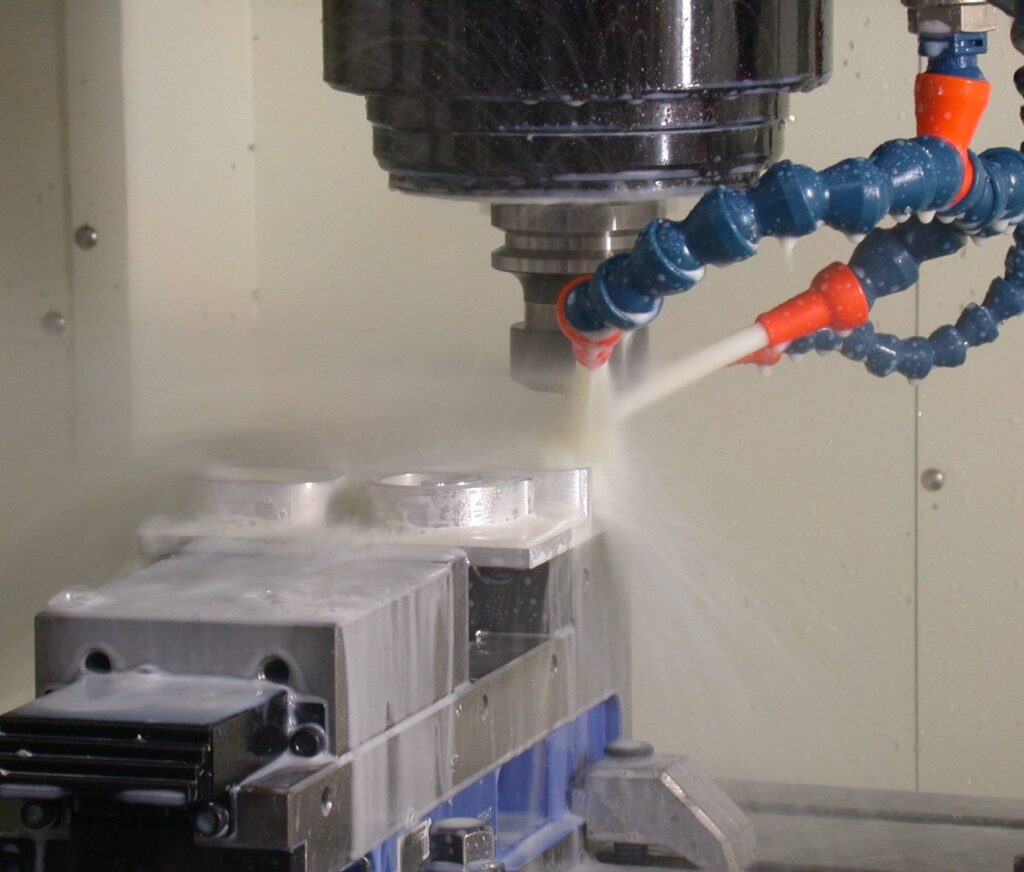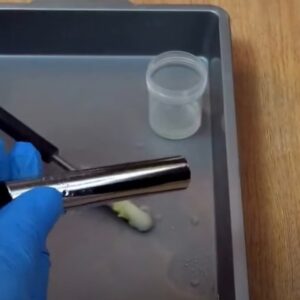With superior corrosion resistance and strength, stainless steel is essential in the automotive and construction sectors. The metal product sector used 38% of global stainless steel in 2022. Yet, its precious features also make it challenging to cut. This article covers how to cut stainless steel. It navigates its high tensile strength and hardness for clean cuts without damaging the material.
Overview of Stainless Steel
Composition and Properties
Stainless steel is a unique alloy of iron and chromium containing at least 11% chromium and nickel. These elements improve stainless steel’s strength and corrosion resistance. Chromium creates a passive chromium oxide coating on the surface to protect it against corrosion and rust. Nickel increases the alloy’s formability and toughness for several grades and uses.
The austenitic 304 grade, rich in chromium (18%) and nickel (8%), is perfect for kitchenware and automotive components because of its adaptability and durability. The 316 grade, containing molybdenum, resists chemical corroders better and is suitable for pharmaceutical and marine uses.
Common Uses in Industry
Stainless steel’s grades and qualities make it versatile in the industrial world.
- Ferritic stainless steels, especially 430, are used in exhaust systems and trim components in the automobile sector for their magnetic and thermal conductivity.
- Due to its corrosion resistance, austenitic stainless steels, including 316, are used in façades, roofing, and load-bearing structures in the building industry.
- The medical field benefits from the hypoallergenic and easy-to-clean nature of 440 and 420 martensitic stainless steels in surgical instruments and implants.
- The aerospace industry uses precipitation-hardening (PH) grades like 17-4 PH for aircraft fittings and engine components due to their strength and corrosion resistance.
Fabricating components for these industries requires knowing how to cut stainless steel and precision cutting processes. It helps retain material integrity and create clean, precise cuts.
Preparation for Cutting Stainless Steel
Workspace Setup for Cutting Stainless Steel
Preparing your workspace is key when figuring out how to cut stainless steel. A clean, well-lit, solid workbench inhibits excessive movement that might cause errors or accidents. To avoid fire hazards while cutting outdoors with plasma cutters or angle grinders, clean the vicinity of combustible items. On the other hand, indoor spaces should be well-ventilated while utilizing oxy-acetylene torch cutting. Remember, using a sturdy workbench absorbs vibrations for smoother cuts. For accurate measurements and marking, proper illumination helps avert errors.
Safety Measures in Stainless Steel Cutting

Cutting stainless steel needs proper PPE. Safety goggles protect the eyes from flying debris and sparks. Conversely, gloves prevent cuts and burns. Keep a fire extinguisher handy while using tools that create intense heat or sparks to avoid fires. Ear protection could stop long-term hearing loss in noisy manufacturing situations. A sand bucket or fire blanket is a good fire safety item when working inside. Each piece of PPE protects against stainless steel cutting hazards for worker safety.
Tools and Techniques for Cutting Stainless Steel
Selection Based on Thickness
When determining how to cut stainless steel, tool selection depends on thickness. Tin snips and power shears cut thin sheets precisely without distortion. Nevertheless, thick plates need plasma cutters or circular saws to cut efficiently despite their resistance and density.
Detailed Overview of Cutting Methods

Mechanical Cutting Tools
Tin snips, power shears, circular saws, band saws, and drills may cut stainless steel of different thicknesses. As mentioned, tin snips operate like scissors for thin sheets. For thicker sheets, power shears save manual effort. Carbide-tipped circular and band saws cut medium to thick stainless steel. High-speed steel or cobalt bits allow drills to make accurate holes without overheating.
Thermal Cutting Processes
Plasma cutting, laser cutting, and oxy-acetylene torch cutting may heat-cut stainless steel. The speed and quality of plasma cutters render them ideal for thick plates. Precision laser cutting is best for detailed work on thinner materials. The oxy-acetylene torch, albeit less popular owing to material warping and oxidation, is nevertheless employed for high-heat applications.
Advanced Methods
Waterjet cutting and EDM increase the possibilities for stainless steel work. Waterjet cutting cuts stainless steel of virtually any thickness without thermal stress using high-pressure water and abrasives. While utilizing electrical discharges to erode the material, EDM may create precise forms or features in thicker stainless steel components where traditional cutting processes fail.
Tool Maintenance
For maximum stainless steel cutting results, sharp and well-conditioned tools are important. Due to inaccurate cuts, tool strain, and workpiece damage, dull blades or bits waste material. Regular inspection, sharpening, and storage to avoid corrosion and wear keep tools ready for efficient usage. Ultimately, it augments the quality of how to cut stainless steel efficiently.
Step-by-Step Cutting Process
Measuring and Marking

Cutting stainless steel involves precise measurement and marking to minimize waste and guarantee accurate cuts. Take an appropriate tape measure and a fine-tip marker that can be seen on steel. Use a machinist’s square or digital angle finder for precise alignment of complicated shapes or angles. This early precision helps utilize resources efficiently and lays the groundwork for cutting.
Cutting Techniques
When discussing how to cut stainless steel, using the proper cutting method for the tool is essential for clean, accurate cutting. Tin snips may work for thin sheets, but sharp blades and gradual cuts are needed. An angle grinder with a stainless steel-specific cutting wheel is best for thicker sheets or tubes. Start the tool before contact and move it slowly to avoid burring. Plasma cutters work best with thick steels while adjusting the current to maximize cutting speed and minimize heat.
Cooling and Lubrication

Cutting stainless steel needs cooling and lubrication to avoid overheating and discoloration. Use a stainless steel coolant or cutting fluid to decrease heat and friction. A constant coolant feed straight to the cutting zone improves cut quality and prevents work hardening during drilling and milling. Maintaining a modest speed for plasma cutting enables clean cuts without heat buildup.
Troubleshooting Common Challenges
Work Hardening
When considering how to cut stainless steel, work hardening must be managed. Austenite stainless steels like 304 and 316 are most affected and become harder and more resistant when cut. Work hardening may be prevented by cutting at a steady, high speed. Tools with a positive rake angle minimize force and work hardening. Carbide-tipped tools are recommended over high-speed steel (HSS) because they stay sharp and efficient while cutting hardening-prone stainless steel.
Tool Wear
Given the hardness of stainless steel and high cutting temperatures, tool wear is unavoidable. Cutting fluids and materials must be chosen to prolong tool life. For stainless steel, sulfur-based cutting fluids lower cutting temperature and friction for less tool wear. Tool materials, including cemented carbide or cobalt alloys, are preferred for their wear resistance and high-temperature hardness. Meanwhile, polycrystalline cubic boron nitride tools have great hardness and heat conductivity while guaranteeing life expectancy and accuracy in delicate cuts.
Professional Services for Stainless Steel Cutting
When projects require precision in how to cut stainless steel for complex patterns or when working with thicker grades that challenge conventional workshop tools, outsourcing to professionals like SHANENTECH is important. For cost-effectiveness, professional services use innovative methods to decrease material waste and tool wear. These services also regulate stainless steel’s qualities, including its inclination to harden when heated or discolored, assuring product integrity.




